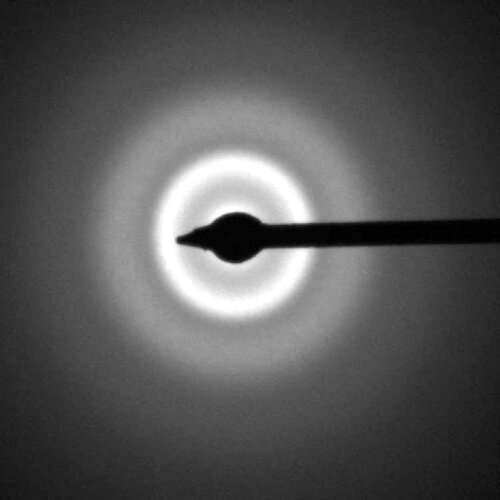June 21, 2019 report
A new coating material that could help reduce thermal noise on gravity wave detector mirrors

A team of researchers from the University of Glasgow, the University of Strathclyde and Hobart and William Smith Colleges has developed a new coating for mirrors used on gravity detectors that is 25 times less noisy than mirror surfaces used on LIGO. In their paper published in the journal Physical Review Letters, the group describes how they made it and how well it performed during testing.
The mirrors used in gravity wave detectors are positioned at the ends of its arms. Coherent light rays are reflected from both mirrors and interfere with each other. Gravitational waves are measured by noting how much the mirrors shift, resulting in slight changes in length of the arms to which they are attached, to an accuracy of 10–16 cm. As impressive as that is, researchers want to improve the sensitivity of the detectors used at LIGO/Virgo, even after the recent upgrade.
To that end, members of the European Union have begun developing plans for the construction of what the Einstein Telescope, a gravitational wave detector with sensitivity 100 times higher than LIGO/Virgo. But for that to happen, improvements in the design of the current interferometer are required. One of those improvements is reducing the amount of thermal fluctuations in the mirror coatings. In this new effort, the researchers claim to have done just that.
Fluctuations in the mirror coating are due to mechanical loss in which vibrations result in heat generation, causing thermal fluctuations. The noise from the fluctuations interferes with measuring the gravity waves. For the current systems, the level of noise is acceptable, but it must be reduced significantly for more sensitive detectors.
To reduce the noise in the mirror coating, the researchers replaced the fused silica and tantalum oxide currently used with hafnium oxide and amorphous silicon, respectively. Testing showed the replacements to be 25 times less noisy than the present coatings—enough for use on the Einstein Telescope.
Theorists have estimated that the Einstein Telescope should be capable of finding primary black holes and other exotic objects—and it should also provide the necessary findings to clarify the Hubble constant.
More information: Kieran Craig et al. Mirror Coating Solution for the Cryogenic Einstein Telescope, Physical Review Letters (2019). DOI: 10.1103/PhysRevLett.122.231102
Journal information: Physical Review Letters
© 2019 Science X Network




















